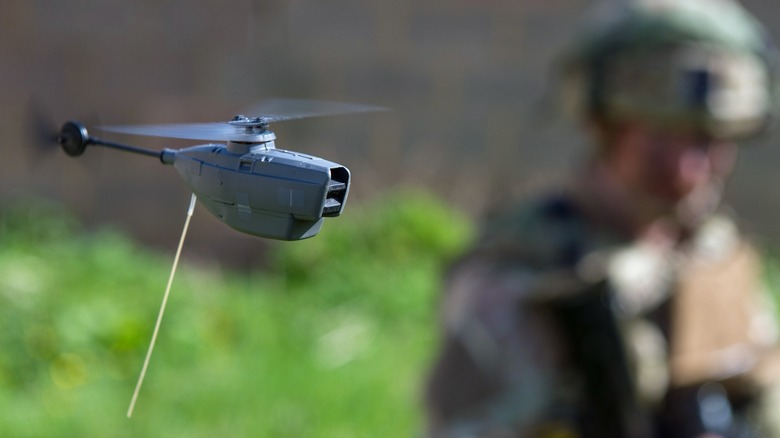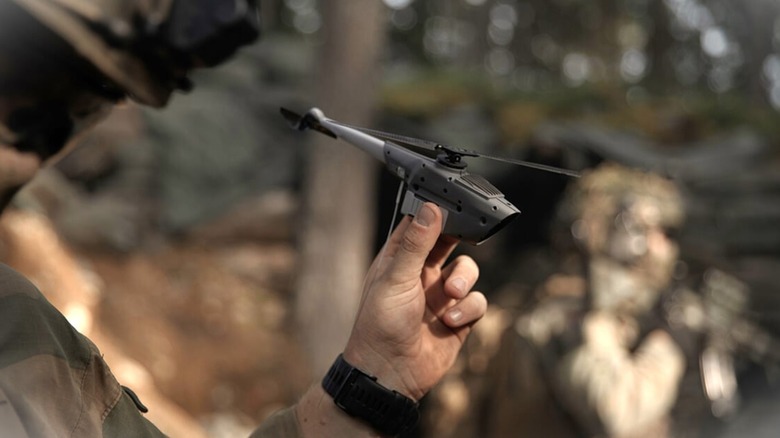The Next Wave Of Military Drones Could Be Mosquito-Sized And Stealthy
When the United States entered the War on Terror, it did so with a series of drone aircraft ready to exploit enemy signals and positions. It took some time to arm them, but uncrewed aerial systems (UAS) like the MQ-1 Predator and MQ-9 Reaper rained all manner of ordnance onto enemy locations. These were relatively large aircraft despite not requiring an onboard pilot, but bigger isn't always better. Sure, there are even larger drones like the RQ-4 Global Hawk, but as technology advances, drones are getting smaller.
This makes them harder to detect and shoot down. Additionally, it's cheaper to manufacture them, allowing for a much larger amount of acceptable loss should they fail or be taken out of the fight. It seems developers around the world are embracing the design philosophy of reducing drones to as small as possible, and in the future, they could be mosquito-sized and far stealthier than contemporary options. Indeed, some defense contractors have already developed palm-sized surveillance drones, like the pictured Teledyne FLIR Black Hornet Nano.
These tiny helicopter-shaped drones can be held in the palm of the hand and are packed with a surprising number of capabilities. These are among a new wave of what's being described as "micro drones," though some call them "nano drones." More are on the way, and they're going to be smaller and far more difficult to locate in a battlespace. Black Hornets aren't meant for kinetic strike, and instead provide real-time intelligence to troops on the ground, working as a force multiplier as the situation unfolds before their eyes.
Micro drones and the future of warfare
The pictured Black Hornet is a popular option developed by Teledyne, which has already seen combat in the Russo-Ukraine War, though it costs a mind-boggling $200,000. That's because it's not your average off-the-shelf micro drone, which could run a consumer about $100. A Black Hornet can be deployed in under 20 seconds, can fly for more than 30 minutes, and has a radio range of up to 1.9 miles. It takes day and night video, as well as thermal imagery.
They can operate via autopilot, hitting predesignated waypoints. There are other examples currently in development, but the burgeoning realm of even smaller drones offers far more possibilities despite their limited size. While not stealth in the traditional sense, a nano drone can reduce noise considerably, making it almost silent. Given their size, sound could give them away (think of how you can often hear a mosquito without seeing one), so this is key in their development. They could be coated in radar-absorbent materials, enabling limited stealth so they could operate in swarms.
Micro drones could also be used for limited kinetic attacks, targeting communications via precision strikes. This capability would be vital in future urban combat situations, where tiny drones could infiltrate buildings and damage wiring or other components to reduce the enemy's ability to operate. It will take more time and development, but it seems the future of drone warfare will be smaller than it is today. This could run into an ongoing concern of using too many drones, but it's likely the military will compensate.

